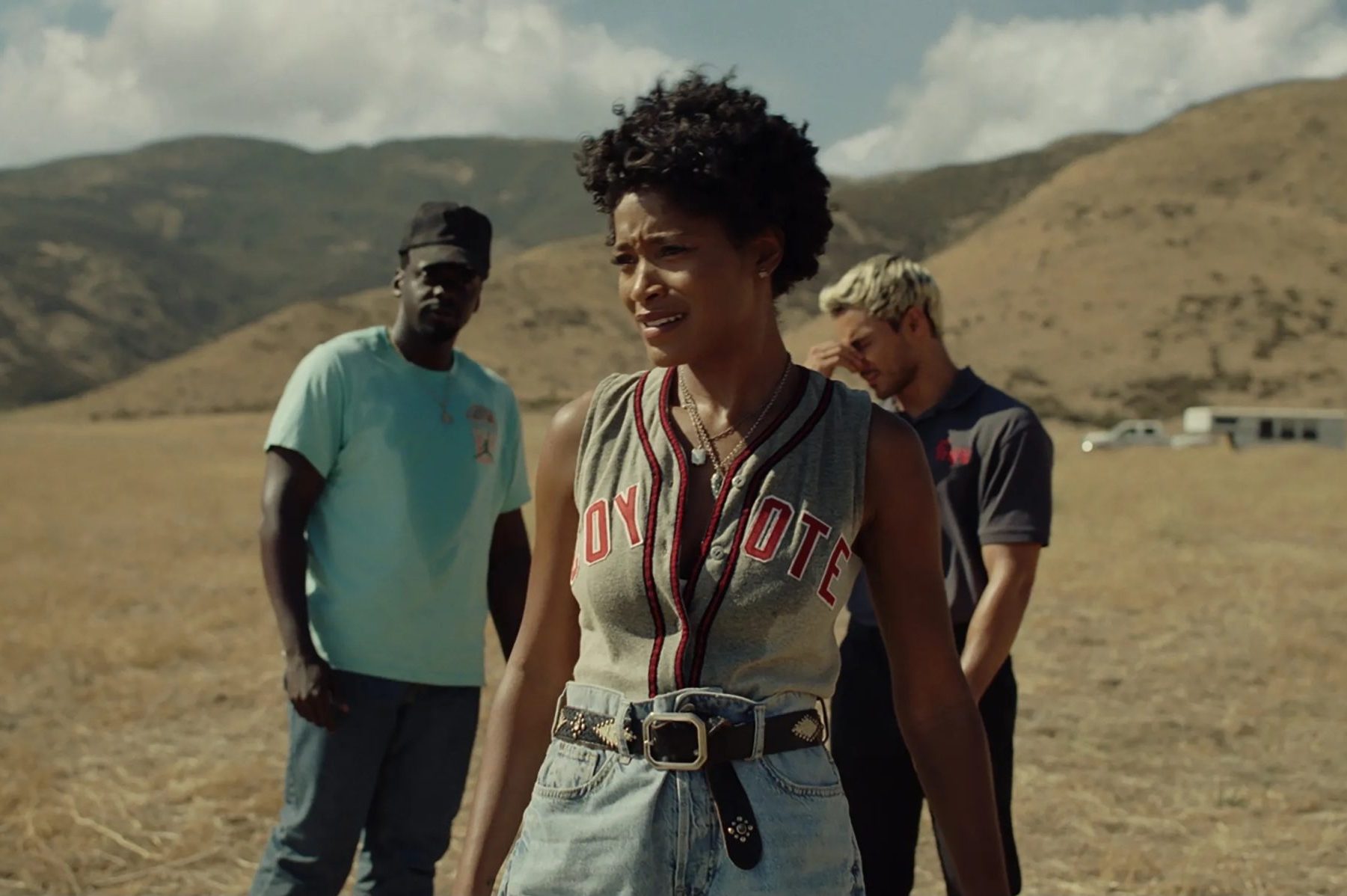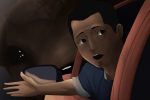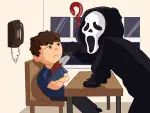Contemporary horror movies are known for pretty much everything other than having creative titles. They’re usually either named after some ominous-sounding word such as “Sinister” or “Insidious,” or they have an oddly specific title that has the word “house” in it like “The House At the End of The Street” or “The House on The Hill.” Names like these kill the intrigue before the masked murderers even have a chance to pull out their knives. They’re dull and lifeless.
So, when I heard the title of Jordan Peele’s most recent film, I, like many others, couldn’t help but feel ecstatic. Nothing makes people want to say yes to seeing a horror movie like one named “Nope.” It has everything. It’s simple yet grabs your attention. It pays homage to contemporary slang, yet it doesn’t seem forced. And above all else, it suggests that the film will feature some sense of self-awareness, another factor that would set it apart from the snooze fests that Blumhouse pumps out every other month.
Unsurprisingly, the hype for “Nope” only got more intense once the trailers were released. The two-minute clips were dark, vague and mysterious, just how we wanted them to be. It was starting to look like the perfect fright-infused addition to Peele’s oeuvre. But when I finally got the chance to see “Nope” in theaters, the experience felt like someone was rickrolling my eyeballs with daggers. It not only wasn’t the self-aware horror flick that the trailers and name made it out to be, but the film seemed to be less aware of itself than Edward Norton’s character in “Fight Club.” Halfway through its two-hour run, the film decides to change genres from sci-fi horror to buddy-comedy. Then about 45 minutes later, it becomes a Western. It changes genres more than our generation has changed the definition of gender
When I say the movie changes genres, I don’t simply mean that the movie juxtaposes different genres consistently in the same way that “Fargo” did. It literally changes styles with no warning. At first, it is a tension-filled sci-fi horror with some intermittent instances of comedic relief. And it is pretty good. But in the first half of the movie, there aren’t any signs that it would turn into an almost lighthearted buddy film in the second half. Sure, the movie’s setting and tropes hint at the upcoming Western theme, but the shift in tone at the end of the film still feels forced and abrupt. By the end of the movie, the genre had shifted so many times that I half expected to see a Romeo and Juliet-style love story break out between Daniel Kaluuya’s character, O.J., and his sister Emerald (Keke Palmer). And to be honest, I almost wished it would’ve happened; at least then the movie would’ve been scary.
In all fairness, though, the movie isn’t entirely awful. There are a few redeeming parts of the film that save it from becoming the next “Freddie vs. Jason.” The first half of the movie is full of the same vague darkness that the trailers had advertised, and the tension rises at a reasonable pace while it is still a horror movie. Peele does what he does best by making the audience feel uncomfortable through the main character’s eyes for a few scenes at the beginning, but seems to abandon that approach after the 30-minute mark. While the overall plot for the first half is decent, the best part of the movie is only partially connected to it.
The best part of the movie is the subplot involving the side character Jupe (Steven Yeun). The start of the storyline coincides with the opening scene of the movie and it shows a monkey on the set of a TV show as everyone around him appears to have been brutally murdered. Later on in the film, it is revealed that Jupe was a child actor and friend of the monkey, Gordie, on the same show. As the rest of the film continues to drag on, the story of Jupe and what happened with Gordie that day on the set is masterfully unwoven.
For the majority of this storyline, we see Jupe continue to demonstrate his showmanship on his own isolated Western-themed park located next to O.J.’s ranch. His connection to the main plot is pretty much only tied to the fact that he wants to purchase O.J.’s property and for most of the film, Jupe feels irrelevant to the story. That is until it is revealed that on the day that Gordie attacked the set of the reality show, he spared young Jupe because they were friends.
The scene in question is by far the most emotionally gripping part of the movie. The camera is shot from the perspective of Jupe as he watches Gordie brutally murder all of his co-stars from under a table. Then, as you’d expect, Gordie eventually finds Jupe under the table and walks over in a classic tension-filled sequence. But instead of killing Jupe, he reaches under the table to give him a fist bump. Immediately after, he is shot and killed right in front of Jupe. Not only does this scene tear at the heartstrings of anyone who has been friends with a troubled specimen before, but it also ties together Jupe’s importance to “Nope.”
Jupe wants to buy O.J.’s ranch because he thought he shared the same type of connection he had with Gordie with the main villain of the movie, the alien-cloud thing (yes, that’s literally the supposed root of all horror here). In buying the ranch, he wanted to be closer to the alien so he could relive the same type of connection he lost when Gordie was killed in front of him.
With a scene so emotionally rich and captivating centered in the middle of the movie, I thought to myself, surely this is when the movie starts to make sense, right? Nope. Instead, the movie completely abandons the depth that it developed through Jupe’s character. Even before the movie turns into a buddy film, the horror of Gordie’s presence disappears completely once the story returns to the main alien plotline of the movie. Perhaps the most disappointing aspect of the movie is that it wasted such a great scene on an otherwise meaningless waste of money.
Other than Jupe, the characters are as two-dimensional and boring as your typical cheap horror movie character. Even Antlers Holst (Michael Wincott), the cryptic filmmaker that O.J. hires to capture footage of the alien, is completely uninspiring. Without compelling characters or a consistent theme or genre to structure the movie, the second half of the film is destined to fail. What could have been an excellent horror movie that lives up to the hype turned into one so disappointing that it will probably kill the hype for Peele’s next movie.
So, as the title of the article says, you should answer the question of whether or not to see “Nope” by reading the title of the movie itself. But if you want to channel your inner horror movie character and enter the theater despite the warning signs, I guess there’s nothing I can do to stop you. My only advice to you now is to leave once it turns into a different movie. As soon as you start to notice the tone shifting into something that resembles a sentimental sports movie, that’s your cue to “Nope” the f— out of the theater. Everything after that is the most terrifying part of the movie: It’s the part where the film starts to suck.

















